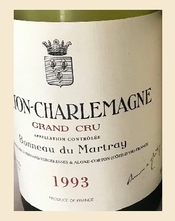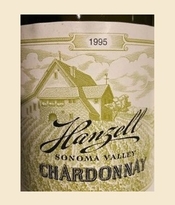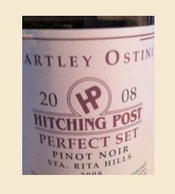Anyone with even a passing interest in wine has no doubt heard that “fine” wine improves with age. I emphasize the word fine because no amount of time in the cellar will magically transform a bad wine. Wines produced from exceptional vineyards, however, often morph over time into something so sublime that wine enthusiasts will pay a handsome sum just for the tasting experience.

I must confess I do so with some regularity. For example, there was the spectacular 1993 Bonneau du Martray Corton-Charlemagne, a grand cru white Burgundy, that I enjoyed in the south of France last summer. A 24-year-old Chardonnay with a crumbling label, the wine was mesmerizing from the first sip to the last.
Wines of this ilk are most often found in an outstanding restaurant with a serious commitment to wine. I ordered the Corton-Charlemagne at the Michelin-starred Oustau de Baumaniere in Les Baux. When I asked the sommelier if the wine was in good condition, he scowled and snorted: “Of course!”
Truth be told, there is always an element of risk when buying an older wine. Every vintage is different. Some age better than others. Some age longer. The evolution isn’t always in a straight line. There comes a point of peak maturity, when a wine is at its absolute best, and then it goes into decline.
Some wines hold their peak longer than others, and some experience a long, slow decline. Others peak and then fall apart.

The vineyard and producer also play a role. Both have a track record. Thus I was intrigued on a visit not long ago to the central coast of California when I spied a vertical of five vintages of Hanzell Chardonnay from the 1990s on the wine list at Angel Oak, the fine-dining restaurant at the Ritz-Carlton Bacara in Goleta, just north of Santa Barbara.
Hanzell, located in the Sonoma Valley, is a legendary producer of Chardonnay. Despite the fact that older California chardonnay in general does not have an outstanding track record, I decided to take a deep dive and order the 1995 Hanzell simply because I respect and admire the winery. The Hanzell was nearly as old as the beautiful 1993 Corton-Charlemagne from last summer and I was ever hopeful that it would be just as delicious.
It wasn’t cheap at $275, but the sommelier assured me the wine had been stored properly (I believe he said at a temp of 54 degrees) in the impressive Bacara wine cellar, which includes more than 1,000 selections. The label was in excellent condition and the ullage (the space between the bottom of the cork and the liquid in the wine bottle) was pristine.
The sommelier pulled the cork and poured a taste for my approval. My heart sank. It smelled like sherry, indicating it had oxidized. The first taste was astringent. Yet all was not lost. Oxidation, when exposed to air, will often dissipate. I swirled the wine in the glass and tasted again. It was a bit better, I told the sommelier. He then asked if I would like to have the wine decanted. It was an excellent idea.
Over the next ten minutes or so the wine came to life and the oxidative characteristics disappeared. There was little left of primary fruit aroma, which is to be expected in a very old wine, and the color had deepened to a dark amber. But the secondary aromas of spice, caramel and minerals, which become more pronounced as the primary fruit flavors fade, offered intriguing complexity and a level of pleasure I hadn’t expected after the first sip.
Although the Hanzell hadn’t delivered as spectacularly as the Corton-Charlemagne, I found the experience worthwhile, though I doubt I would purchase the same wine again.
Yet a few days later, as I worked my way up the coast, I was tempted again to take a deep dive into an older vintage. This was a ten-year-old Pinot Noir, the 2008 Hitching Post “Perfect Set” from Sta. Rita Hills. The circumstances were similar.
The Hitching Post is a restaurant in Buellton, in the heart of Santa Barbara County’s Santa Ynez Valley. Chef/owner Frank Ostini makes his own wine, which he sells both retail and on-premise. It’s a tossup as to whether Ostini is a better chef or a better winemaker.

The server this evening at The Hitching Post pointed me toward the wine-list special, which features older vintages of Pinot Noir. He hooked me with the inside information that some of the grapes to produce this wine were from Kathy Joseph’s Fiddlestix vineyard, though I couldn’t find anything about that on the label.
I normally consider a ten-year-old California Pinot Noir a risky proposition, but I decided to go all in, and the price was sweet at a mere $68.
I admired the deep, dark color as the wine was poured. I took a whiff. Beautiful red and black fruits, with a floral note and hints of spice floated from the glass.
I took a sip. Heaven. Fruit purity. Complexity. Exquisite balance. This is the reason I will never shy, despite the risk, from ordering old wines.
Follow Robert on Twitter at @wineguru.